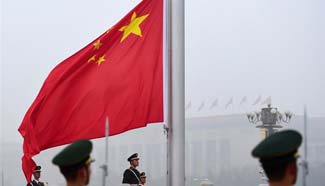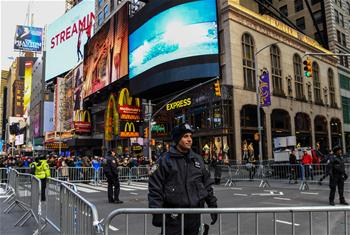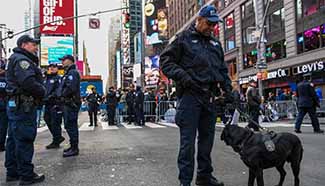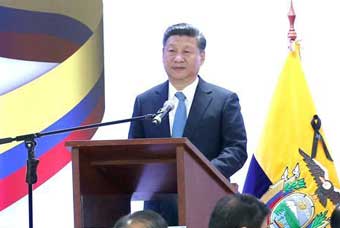SAN FRANCISCO, Jan. 1 (Xinhua) -- Jennifer Dionne, associate professor of materials science and engineering at Stanford University, has teamed up with Miriam B. Goodman, a professor of molecular and cellular physiology, to feed nanoparticles to millimeter-long worms.
When struck by a near-infrared laser, the particular nanoparticles glow and change color depending on the pressure around them, giving off real-time information about the forces they're undergoing while they're still inside the barely visible worms, known as Caenorhabditis elegans, according to a Stanford University news release on Sunday.
The ultimate goal of the work by the interdisciplinary partnership is to detect force in human cells, because as in humans, digestion in worms involves mechanical gnashing and shoving that can provide insight into how these nanoparticles register cellular force.
"Altered cellular-level forces underlie many disorders, including heart disease and cancer," said Dionne. "This would be a nanoscale readout that you could use in vitro or in vivo to detect disease at a very early stage."
So far, Dionne's lab has made the nanoparticles, and Goodman's worms have eaten the high-tech snack and the researchers have taken static images of the nanoparticles inside the worms.
"The color that each nanoparticle emits changes from red to orange when there is a mechanical force on the order of nanonewtons to micronewtons, a force range thought to be very relevant for intercellular forces," said Alice Lay, a graduate student in the Dionne lab who is leading the experiments.
The tiny size of the nanoparticles means they have the potential to produce extremely high-resolution force maps, providing a window into the push and pull of and by cells on a deeply subcellular level. Someday, these biocompatible nanoparticles could be ingested or injected into a person in a specific area, such as at a wound site or suspected tumor. Through reading the colors emitted by the nanoparticles, labs could create a force map that indicates the fine-scale activity of the cells around that area.
"Mechanical forces play a significant role in determining the fate and function of a cell or of an organ," Dionne was quoted as saying in the release. "For example, every time our heart beats, our ears hear or a wound heals, cellular forces are involved."
After studying healthy worms, the team will introduce mutations into the mix to discern the role of gene expression on cellular forces. These mutations will allow the team to better understand digestive and related disorders, including acid reflux and hernia formation.










